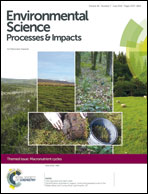The estimation of the rates of lead exchange between body compartments of smelter employees
Abstract
The overwhelming proportion of the mass of lead (Pb) is stored in bone and the residence time of Pb in bone is much longer than that in other tissues. Hence, in a metabolic model that we used to solve the differential equations governing the transfer of lead between body compartments, three main compartments are involved: blood (as a transfer compartment), cortical bone (tibia), and trabecular bone (calcaneus). There is a bidirectional connection between blood and the other two compartments. A grid search chi-squared minimization method was used to estimate the initial values of lead transfer rate values from tibia (λTB) and calcaneus (λCB) to blood of 209 smelter employees whose bone lead measurements are available from 1994, 1999, and 2008, and their blood lead level from 1967 onwards (depending on exposure history from once per month to once per year), and then the initial values of kinematic parameters were used to develop multivariate models in order to express λTB and λCB as a function of employment time, age, body lead contents and their interaction. We observed a significant decrease in the transfer rate of lead from bone to blood with increasing body lead contents. The model was tested by calculating the bone lead concentration in 1999 and 2008, and by comparing those values with the measured ones. A good agreement was found between the calculated and measured tibia/calcaneus lead values. Also, we found that the transfer rate of lead from tibia to blood can be expressed solely as a function of cumulative blood lead index.


 Please wait while we load your content...
Please wait while we load your content...